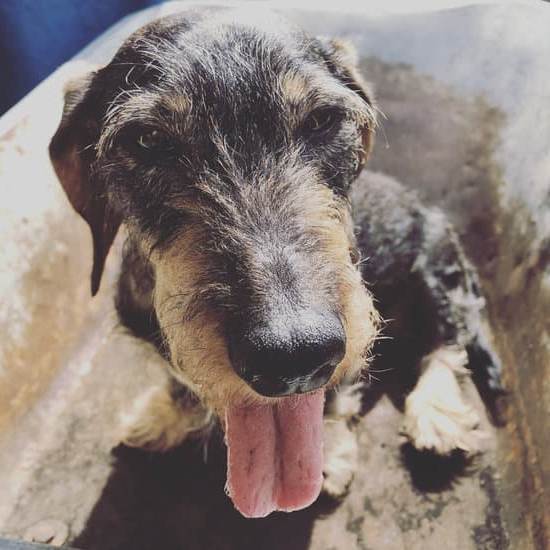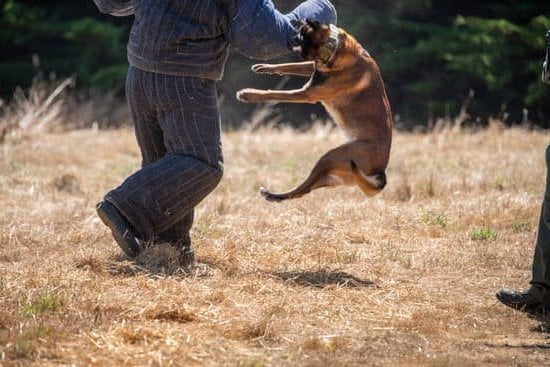Are you wondering how to train a dog to overcome fear? Understanding fear in dogs is the first step in helping your furry friend conquer their anxieties. Fear can manifest in various ways, impacting a dog’s behavior and overall well-being. From common triggers to its effects, gaining insight into fear in dogs is essential for their training and care.
Recognizing the signs of fear in your dog is crucial for providing the support they need. By understanding the physical and behavioral indicators of fear, you can differentiate it from other emotions in dogs. Establishing trust and bonding with your dog is also vital in fear training. Techniques such as building trust and creating a secure environment can help alleviate their fears.
Additionally, gradual exposure and desensitization are key components of training a fearful dog. Implementing these techniques, along with positive reinforcement methods, can aid in gradually reducing their apprehensions. Patience, consistency, and continued support are fundamental throughout the training process to ensure long-term success for your beloved pet.
Recognizing the Signs of Fear in Your Dog
When it comes to training a dog to overcome fear, one of the crucial steps is being able to recognize the signs of fear in your furry companion. Understanding and identifying these signs can help you address your dog’s fears effectively and provide the necessary support. Here are some important aspects to consider when recognizing the signs of fear in your dog:
Physical Signs of Fear in Dogs
Your dog may exhibit various physical signs when experiencing fear. These can include trembling, tucking the tail between the legs, panting excessively, drooling, yawning, and avoidance behaviors such as trying to escape or hide. It’s essential to pay attention to these physical cues as they can indicate that your dog is feeling fearful or anxious.
Behavioral Signs of Fear in Dogs
In addition to physical indications, dogs also display behavioral signs of fear. This can include sudden aggression or reactivity, cowering or freezing in place, excessive barking or whining, and showing submissive behaviors such as licking their lips or averting their gaze. Recognizing these behavioral signs can help you intervene appropriately and provide comfort and reassurance to your dog.
Differentiating Fear From Other Emotions in Dogs
It’s important for pet owners to be able to differentiate fear from other emotions that dogs may experience. For example, excitement or frustration can sometimes be mistaken for fear. Learning to read your dog’s body language and understanding their individual temperament can assist you in accurately recognizing when your dog is truly feeling fearful and requires support.
By being attentive to both the physical and behavioral signs of fear in your dog, you can gain valuable insights into their emotional state and provide them with the necessary care and guidance as they work through their fears.
Building Trust and Bonding With Your Dog
When it comes to training a fearful dog, building trust and bonding with your pet is essential for their overall well-being and progress in overcoming their fears. Understanding how fear can manifest in dogs is the first step towards creating a strong foundation of trust. Whether it’s through body language, vocalizations, or specific behaviors, fear can have various manifestations in dogs that pet owners should be aware of.
Recognizing the Signs of Fear in Your Dog
Before embarking on the journey of building trust with your fearful dog, it’s crucial to recognize the signs of fear in your pet. This includes both physical and behavioral indicators such as trembling, shaking, cowering, pacing, barking excessively, or even showing signs of aggression when feeling threatened or scared.
Creating a Safe and Secure Environment for Your Dog
One way to build trust and bond with your fearful dog is by providing a safe and secure environment. This can include establishing a predictable routine, providing access to a designated “safe space” where they feel comfortable and secure, and avoiding any situations that might trigger their fears unnecessarily. Additionally, maintaining a calm and reassuring presence around your dog can go a long way in helping them feel safe and secure.
Gradual Exposure and Desensitization
When it comes to training a dog to overcome fear, gradual exposure and desensitization are essential techniques. Gradual exposure involves slowly introducing the fearful stimuli to your dog in a controlled manner, allowing them to become more comfortable over time. Desensitization focuses on reducing the negative reaction to the feared stimulus by repeatedly exposing the dog to it at a low intensity.
To implement these techniques for a fearful dog, it’s important to create a systematic plan. Start by identifying the specific triggers that cause fear in your dog, whether it’s other dogs, loud noises, or unfamiliar environments. Once you have identified these triggers, you can begin the process of gradually exposing your dog to them in a safe and controlled manner.
For example, if your dog is afraid of other dogs, start by having them observe other dogs from a distance where they feel safe and comfortable. Over time, gradually decrease the distance until your dog can be in close proximity to other dogs without exhibiting signs of fear.
It’s crucial to be patient and consistent throughout this process. Rushing through exposure or pushing your dog too far beyond their comfort zone can exacerbate their fear rather than help them overcome it. By taking things slow and providing positive reinforcement during each step of the process, you can help build your dog’s confidence and reduce their fear response.
| Aspect | Details |
|---|---|
| Training Techniques | Gradual exposure and desensitization |
| Example | Slowly introducing fearful stimuli; reducing negative reactions through repetitive exposure at low intensity |
| Tips for Implementation | Create a systematic plan; identify specific triggers; be patient and consistent |
Positive Reinforcement Training Methods
Positive reinforcement has been proven to be an effective training method for dogs, especially when dealing with fear and anxiety. This training technique involves rewarding your dog for exhibiting the desired behavior, which encourages them to repeat it. When using positive reinforcement to train a fearful dog, it is important to choose appropriate rewards that motivate your dog and make them feel secure.
Some examples of positive reinforcement techniques for fear training include giving treats, praise, or toys when your dog shows courage in situations that typically trigger fear. It’s essential to be consistent with this approach, reinforcing the positive behavior every time it occurs. Additionally, timing is crucial when using positive reinforcement – the reward should be given immediately after the desired behavior is displayed.
Tailoring rewards to suit your dog’s individual preferences is also important in positive reinforcement training. Some dogs may be highly food-motivated and respond best to treats, while others may prefer playtime and interaction as their reward. Understanding what truly motivates your dog will help make the training process more effective and enjoyable for both of you.
Using positive reinforcement techniques can help build confidence in a fearful dog and create a more optimistic outlook on previously anxiety-inducing situations. This method fosters a trusting bond between you and your pet while helping them overcome their fears gradually. Patience, consistency, and understanding are fundamental when implementing positive reinforcement training methods, but the reward of seeing your once-fearful dog blossom into a confident companion is undeniably worth the effort.
| Training Technique | Example |
|---|---|
| Treats | Using high-value treats such as small pieces of cooked chicken or cheese to reward brave behavior in fearful situations. |
| Praise | Verbally praising your dog with gentle words and a happy tone when they display courage during exposure or desensitization exercises. |
| Toys | Using interactive toys or favorite play objects as a form of reward for overcoming fear-triggering stimuli. |
Seeking Professional Help
For some pet owners, dealing with a fearful dog may become overwhelming and seem like an impossible task to handle alone. In such cases, seeking professional help can be the best course of action to ensure the well-being of your pet. Here are some factors to consider when deciding whether it’s time to seek assistance:
– **Severity of Fear:** If your dog’s fear is severe and significantly impacts its quality of life, seeking professional help is crucial. A professional dog trainer or behaviorist can assess the severity of your dog’s fear and provide a tailored plan for addressing it.
– **Lack of Progress:** If you’ve been working on overcoming your dog’s fear for a significant amount of time without seeing any progress, consulting with a professional might offer fresh insights and strategies that could make a difference.
– **Your Comfort Level:** Training a fearful dog can be emotionally taxing, especially if progress is slow or setbacks occur. Seeking professional help can alleviate some of this burden and provide guidance and support as you navigate through the process.
Finding the right professional for your dog’s specific needs is essential. Look for certified trainers or behaviorists with experience in working with fearful dogs. They should use positive reinforcement methods and have a patient and compassionate approach to training. Before enlisting their services, ask about their training philosophy, success rate with fearful dogs, and any relevant credentials or certifications they hold.
Remember that seeking professional help does not mean giving up on your efforts; instead, it demonstrates your commitment to finding the best solution for your furry companion’s well-being. With the expertise and guidance of a qualified professional, you can work together towards helping your dog overcome its fears and lead a happier, healthier life.
Patience and Consistency in Training
Training a fearful dog to overcome their fears can be a challenging and time-consuming process, requiring a great deal of patience and consistency from the owner or trainer. It’s important to understand that fear in dogs is not something that can be easily overcome overnight, and it may take weeks, months, or even years for a fearful dog to make significant progress.
Here are some key points to keep in mind when it comes to patience and consistency in fear training:
- Patience is key: Understand that progress may be slow and incremental, and not every training session will result in visible improvements. It’s important to remain patient and not get frustrated with your dog as they work through their fears.
- Consistency is crucial: Consistently exposing your dog to their fears in a controlled and gradual manner, using positive reinforcement techniques, will help them build confidence over time. Inconsistency in training can set back your dog’s progress.
- Manage expectations: Setting realistic goals for your dog’s progress is essential. It’s unlikely that a severely fearful dog will become completely fearless, but small steps forward should be celebrated as significant achievements.
By staying patient and consistent throughout the training process, you can help your dog gradually build confidence and learn to overcome their fears with time.
Throughout the training process, it’s also important for owners or trainers to maintain a positive attitude and approach towards their fearful dog. Dogs are incredibly intuitive animals and can pick up on human emotions easily. By remaining calm, supportive, and encouraging during training sessions, you can provide a sense of security for your dog as they work through their fears.
Remember that every small victory should be celebrated-a confident step forward during a scary situation or a calm response in the face of fear are all signs of progress. Continued support is crucial for the emotional well-being of a fearful dog, so providing ongoing encouragement, love, and care will contribute to their long-term success in overcoming fear.
Celebrating Progress and Continued Support
In conclusion, understanding and addressing fear in dogs is a crucial part of responsible pet ownership. By recognizing the signs of fear in your dog and taking proactive steps to build trust, provide gradual exposure, and use positive reinforcement training methods, you can help your furry friend overcome their fears and live a happier, healthier life.
It’s important to remember that fear training takes time, patience, and consistency. Small victories should be celebrated along the way, and ongoing support for your dog’s emotional well-being is essential. By seeking professional help when necessary and staying motivated throughout the process, you can ensure continued progress for your fearful dog.
Ultimately, by creating a safe and secure environment for your dog and providing them with the love and care they need, you can play an instrumental role in helping them overcome their fears. With dedication and commitment to their well-being, you can set realistic goals for their progress and provide the continued training and support needed for long-term success.
Frequently Asked Questions
Can Fear Be Trained Out of a Dog?
Fear in dogs can be managed and improved through training, but it cannot be completely trained out. By using positive reinforcement, desensitization, counterconditioning, and behavior modification techniques, a dog’s fear response can be reduced.
It’s important to work with a professional dog trainer or behaviorist to develop a tailored plan for the specific fears and triggers your dog may have.
How Do I Train My Dog to Be Fearless?
To train your dog to be fearless, it’s essential to focus on building their confidence rather than eliminating fear altogether. This can be achieved by providing consistent and positive experiences, exposing them gradually to new environments, people, and animals, and rewarding brave behavior. Avoid coddling or reinforcing fearful behavior as this can inadvertently reinforce their fears.
How Do You Desensitize a Fearful Dog?
Desensitizing a fearful dog involves gradually exposing them to the source of their fear in a controlled and positive manner. Start by identifying the triggers that cause fear and then slowly introduce those triggers at a distance or intensity level that doesn’t instigate a fearful response.
Over time, as the dog becomes more comfortable with the trigger, you can incrementally increase exposure until they are desensitized to it. Patience, consistency, and positive reinforcement are key components of successfully desensitizing a fearful dog.

Welcome to the blog! I am a professional dog trainer and have been working with dogs for many years. In this blog, I will be discussing various topics related to dog training, including tips, tricks, and advice. I hope you find this information helpful and informative. Thanks for reading!





